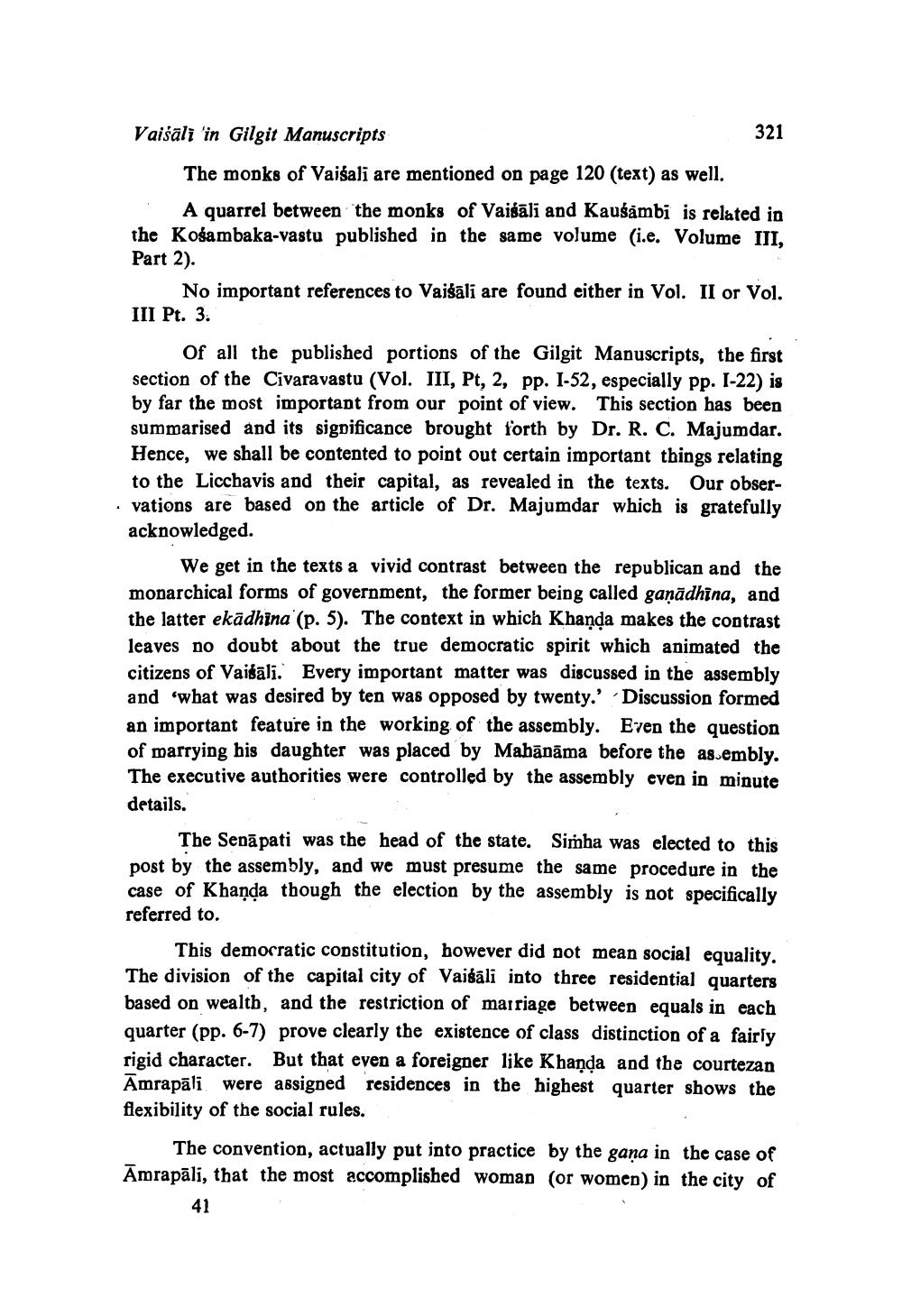________________ Vaisali 'in Gilgit Manuscripts 321 The monks of Vaisali are mentioned on page 120 (text) as well. A quarrel between the monks of Vaigali and Kausambi is related in the Kosambaka-vastu published in the same volume (i.e. Volume III, Part 2). No important references to Vaisali are found either in Vol. II or Vol. III Pt. 3. Of all the published portions of the Gilgit Manuscripts, the first section of the Civaravastu (Vol. III, Pt, 2, pp. 1-52, especially pp. 1-22) is by far the most important from our point of view. This section has been summarised and its significance brought forth by Dr. R. C. Majumdar. Hence, we shall be contented to point out certain important things relating to the Licchavis and their capital, as revealed in the texts. Our obser* vations are based on the article of Dr. Majumdar which is gratefully acknowledged. We get in the texts a vivid contrast between the republican and the monarchical forms of government, the former being called ganadhina, and the latter ekadhina (p. 5). The context in which Khanda makes the contrast leaves no doubt about the true democratic spirit which animated the citizens of Vaigali. Every important matter was discussed in the assembly and what was desired by ten was opposed by twenty.' Discussion formed an important feature in the working of the assembly. Even the question of marrying his daughter was placed by Mahanama before the as embly. The executive authorities were controlled by the assembly even in minute details. The Sena pati was the head of the state. Simha was elected to this post by the assembly, and we must presume the same procedure in the case of Khanda though the election by the assembly is not specifically referred to. This democratic constitution, however did not mean social equality. The division of the capital city of Vaisali into three residential quarters based on wealth, and the restriction of marriage between equals in each quarter (pp. 6-7) prove clearly the existence of class distinction of a fairly rigid character. But that even a foreigner like Khanda and the courtezan Amrapali were assigned residences in the highest quarter shows the flexibility of the social rules. The convention, actually put into practice by the gana in the case of Amrapali, that the most accomplished woman (or women) in the city of




